Scientific name
Aleurodothrips fasciapennis (Franklin, 1909)
Taxonomic position
Thysanoptera: Tubulifera: Phlaeothripidae
Diagnosis
Body bicolored. Head slightly wider than long. Postocular setae not distinguishable from other small setae. Proboscis short, broadly rounded. Maxillary stylets widely spaced, maxillary bridge not discernible. Pronotum shorter than head, with anterolateral and epimeral setae well developed, expanded at apex. Notopleural sutures lacking. Basantra present. Legs with fore femora slightly enlarged, unarmed. Fore wing are narrow and faintly cross banded by four light brown streaks including the band at the tip and the band at the extreme base. Abdomen with pelta divide into three parts. All sternal setae slender. Tube weakly sculptured.
The male bears a large spur on the inner side of the fore femur and the fore tibia has three large seta bearing warts, but spur is absent in female.
Images
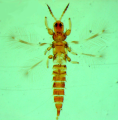 Fig. 1. Male, Dorsal view Fig. 1. Male, Dorsal view
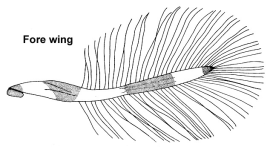 Fig. 2. Fore wing Fig. 2. Fore wing
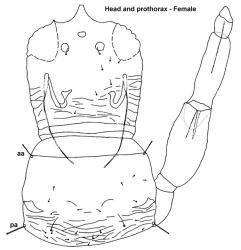 Fig. 3. Head and prothorax - female Fig. 3. Head and prothorax - female
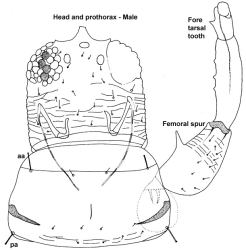 Fig. 4. Head and prothorax - male Fig. 4. Head and prothorax - male
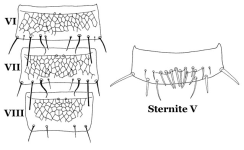 Fig. 5 Fig. 5
Distribution
It is widely distributed in tropical and subtropical regions.
Hosts / Prey
It is predatory on scale insects (Aspidiotus lantanae) (Anathakrishnan, 1964) and immature stages of whiteflies (Plamer & Mound 1991). It has been recorded as feeding on Lepidosaphes
beckii, Chrysomphalus aonidum, Parlatoria pergandii, Aspidiotus nerii, Aulacaspis tubercularis (Homoptera: Diaspididae), Dialeurodes citrifolii (Homoptera: Aleyrodidae), Eotetranychus
sexmaculatus and Panonychus citri (Acari: Tetranychidae) (Watson et al., 1998). A. fasciapennis played a major role in the suppression of Aonidiella aurantii (California red scale) on citrus in China (Beattie, 1985).
Reference
- Franklin, H. J. 1909. On Thysanoptera. Entomological News 20(5):
228-231.
|